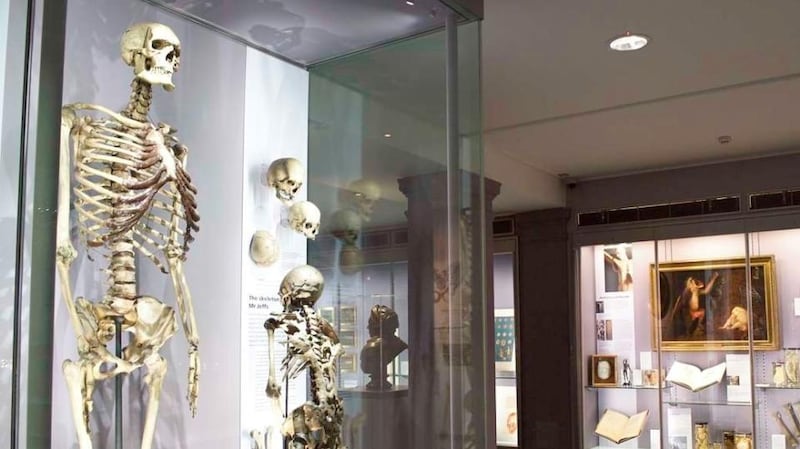In the late 18th century, it paid to be different. Or more precisely, people would pay to get a look at you. Exhibition of “the Irish Giant” is still raising questions of medical ethics even 200 years after his death.
Charles Byrne was born in Littlebridge, Co Derry, of an Irish father and a Scottish mother. His relatives were of normal height, and his growth was later discovered to be caused by a tumour on his pituitary gland.
Accounts of his actual size vary. By August 1780 he was said to be eight feet (2.4 m) tall, with his body in proportion to his height; he was said to have grown two more inches by April 1782; when measured after his death he was reported to be 8 feet 4 inches.
He travelled throughout Britain on exhibition, forming a double act with the (again, roughly) three feet tall Count Joseph Boruwlaski. When exhibiting in Edinburgh he had great difficulty in getting up and down the narrow stairs of the Old Town, and was obliged to crawl on all fours.
He first went to London on April 11, 1782 and exhibited himself at Spring Gardens, laying claim to the title "The Irish Giant". Writer Edward Wood was astounded at "the elegance, symmetry, and proportion of this wonderful phenomenon of nature". Visitors were charged a half-crown and he was so successful that he moved to an elegant apartment at Charing Cross, and then to 1 Piccadilly before finally settling in Cockspur Street, Charing Cross. He created such a sensation in London that he inspired a pantomime, Harlequin Teague or the Giant's Causeway, produced at the Haymarket in August 1782.
His luck abandoned him in April 1783, when he vested all his exhibition profits into a banknote for £700, which was stolen from his pocket in a public house. He died on June 1st that year at Cockspur Street. His death may have been due to his condition, though according to one account he died from tuberculosis. There was also a popular theory he died due to his excessive drinking, which became worse after he lost his savings.
Anxious not to be dissected by anatomists, he had left instructions that he be buried at sea, but his plans to avoid the scalpel were in vain. Wood colourfully reported that surgeons “surrounded his house just as Greenland harpooners would an enormous whale”.

His corpse was taken and sold to the anatomist Dr John Hunter for a large amount of money. Byrne's skeleton, said to measure 7 ft 8.75 inches (2.36 m), is preserved in the museum of the Royal College of Surgeons in London, where there is also a portrait of him.
Hilary Mantel’s The Giant O’Brien is a fictionalised account of Byrne’s life. He was also the subject of a 2011 documentary broadcast on BBC and TG4. A 2015 article in the British Medical Journal, as well as various online polls and petitions, calling on the museum to respect Byrne’s wishes and have him buried at sea, have so far been unsuccessful.
Based on James Quinn’s biography of Charles Byrne (edited for this Extraordinary Emigrants series for Irish Times Abroad by Clare McCarthy) in the Royal Irish Academy’s Dictionary of Irish Biography.



















